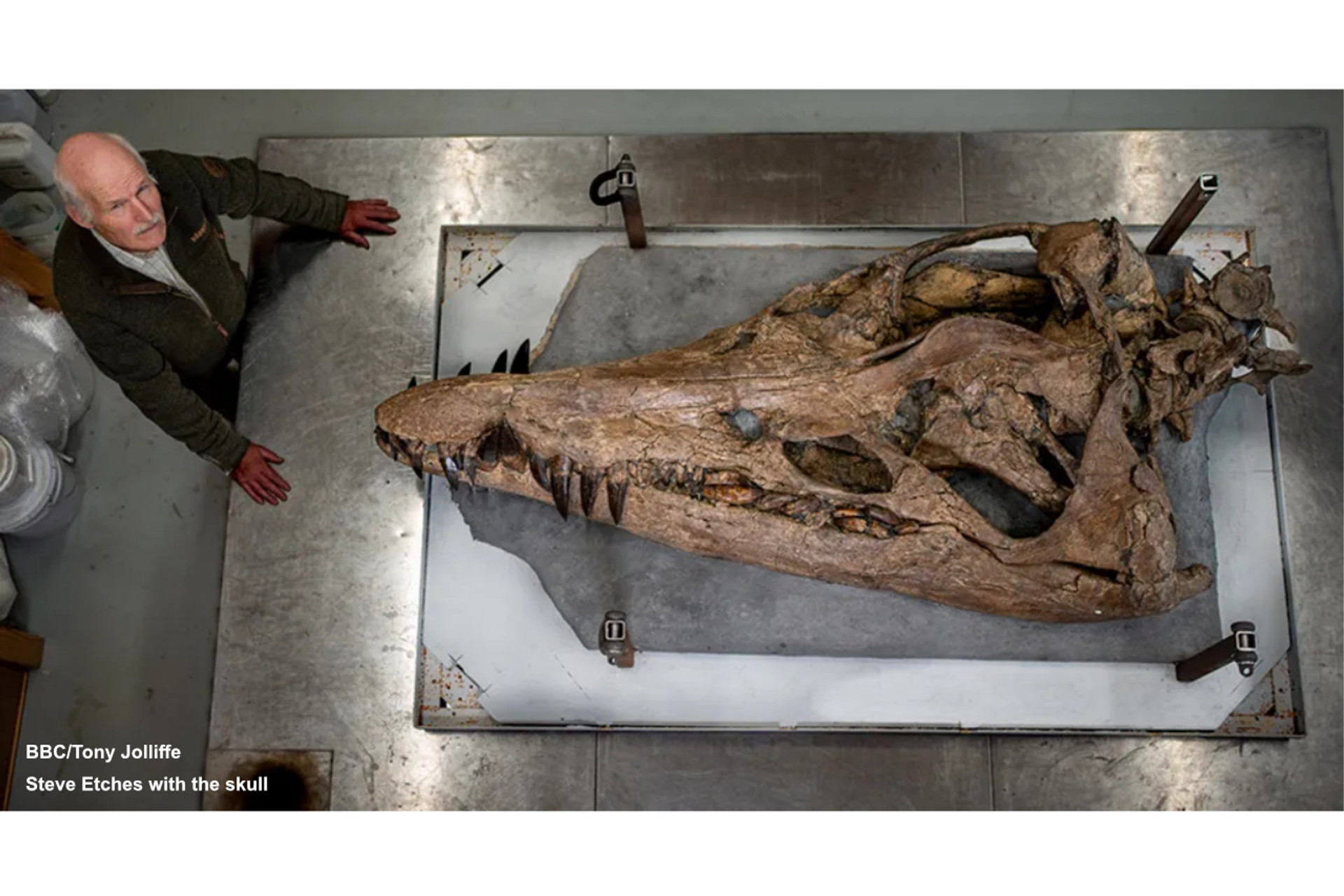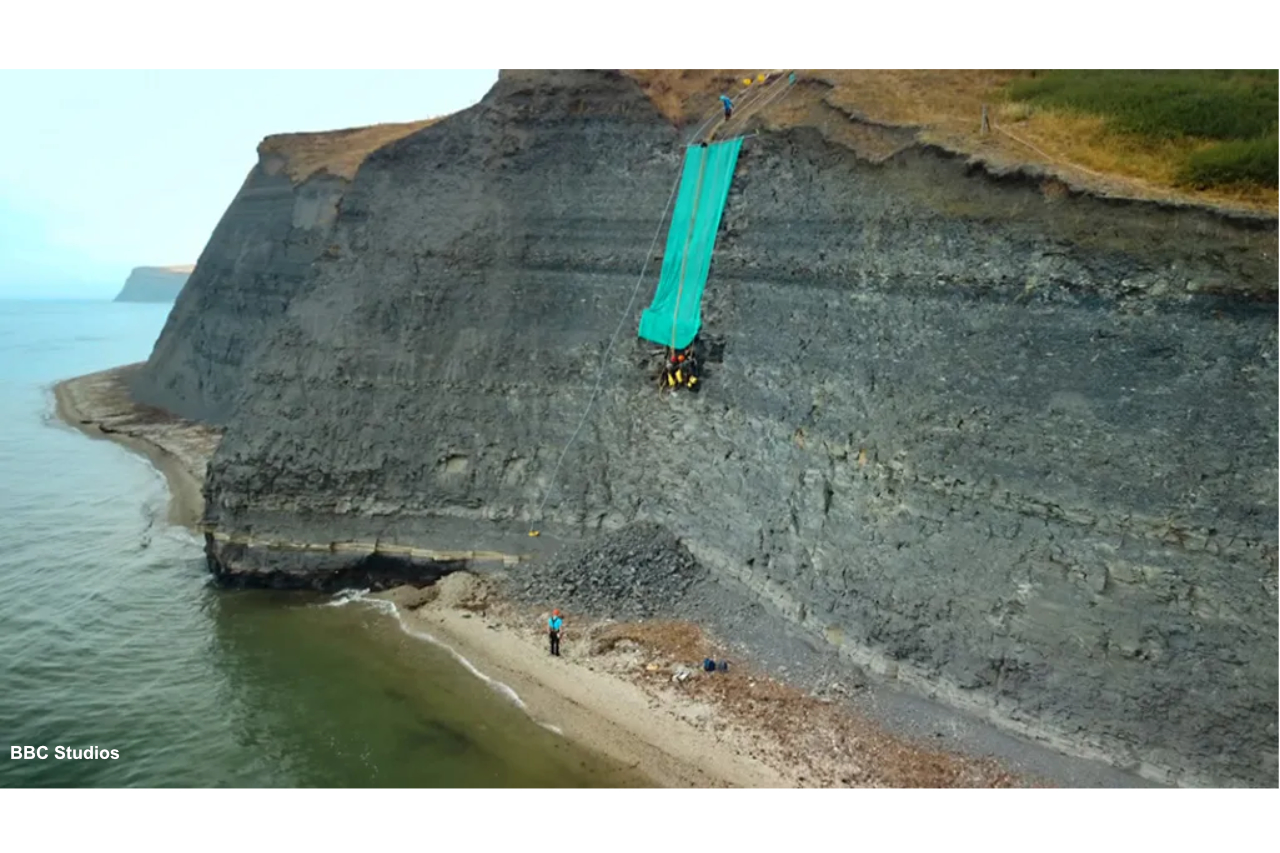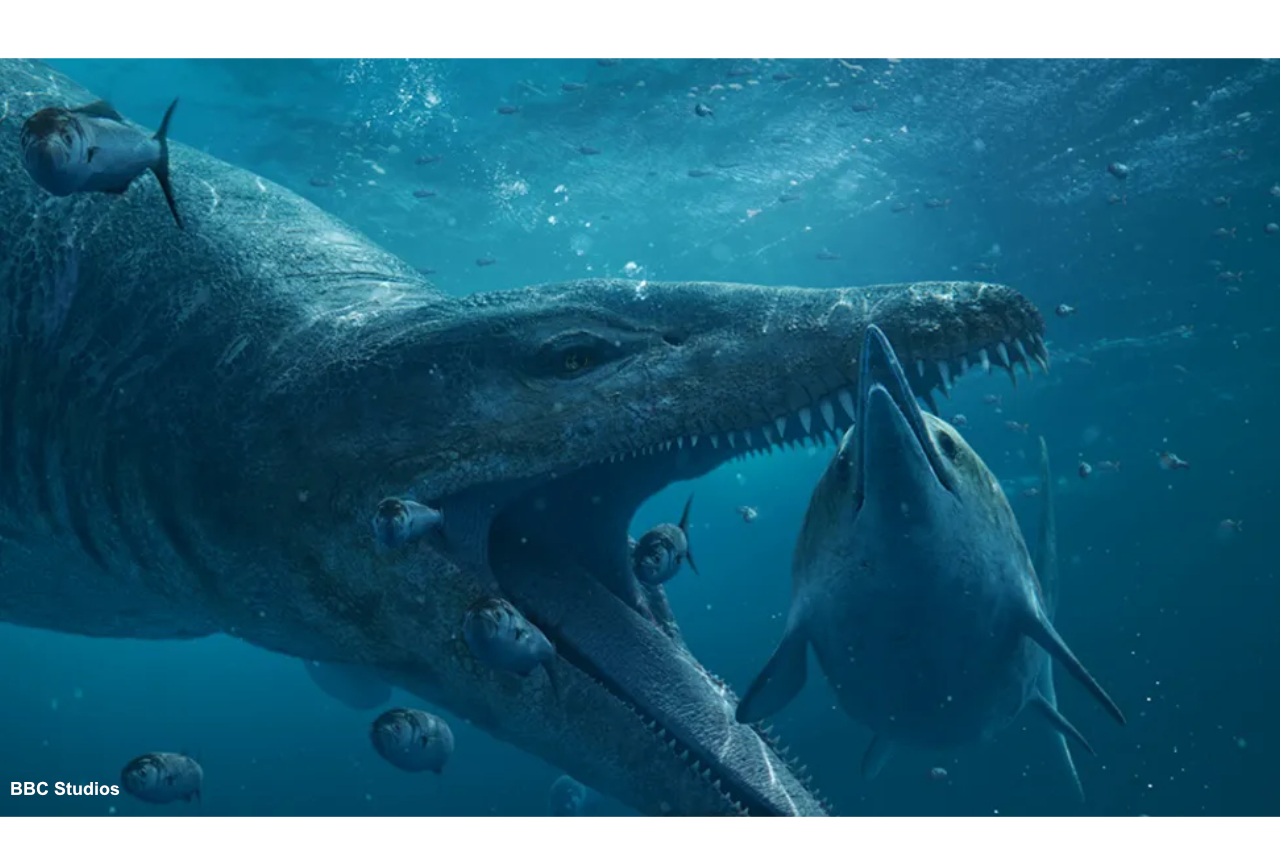Pliosaur discovery: Huge sea monster emerges from Dorset cliffs

The skull of a colossal pliosaur, a fearsome marine reptile from around 150 million years ago, has been unearthed

on Dorset's Jurassic Coast. The 2m-long fossil, one of the most complete of its kind, is shedding new light on the ancient predator. The unveiling of the skull, perfectly preserved and exceptionally detailed, has astonished paleontologists. Local expert Steve Etches, expressing awe at the find, stated that its uniqueness lies in its completeness—both the lower jaw and upper skull are intact, an uncommon feature in global pliosaur specimens. The fossil promises valuable insights into the anatomy and behavior of these ancient sea monsters.
The recently
discovered pliosaur skull, longer than most humans are tall, reveals the
formidable nature of this ancient marine predator. With 130 teeth, particularly
sharp at the front and marked with ridges for efficient flesh-piercing, the
pliosaur, at 10-12 meters in length, was a powerful apex predator. Its
streamlined body, propelled by four flipper-like limbs, made it a swift and
efficient hunter in the ocean. Described as an "underwater T. rex,"
the pliosaur's massive size and deadly jaws would have made it a dominant
force, capable of preying on various creatures’ unfortunate enough to share its
habitat.
The discovery of the pliosaur skull began with a chance find by fossil enthusiasts along a beach near Kimmeridge Bay on the Jurassic Coast. The initial tip of the snout was spotted by Phil Jacobs, and, with the help of Steve Etches, the rest of the fossil was located on the cliff face using a drone survey. The delicate process of excavation, made even more challenging by the precarious location, involved abseiling down from the top of the cliff. The fossil is considered one of the most complete pliosaur specimens ever found, providing unique insights into the life and habits of this ancient marine reptile.
The discovery of the pliosaur skull, meticulously excavated from the cliffs of Dorset's Jurassic Coast, has provided scientists with invaluable insights into the life and habits of these ancient marine reptiles. The fossil, one of the most complete pliosaur specimens ever found, has revealed details about the creature's powerful bite, estimated at 33,000 newtons, surpassing even modern saltwater crocodiles. The pliosaur's feeding strategy, involving clamping its jaws and twisting, is reminiscent of crocodiles. The specimen also exhibits features suggesting acute senses, with small

pits on its snout for detecting changes in water pressure and a hole for a third eye.
The skull discovered is estimated to be around 150 million years old, has illuminated the anatomy and behavior of these formidable marine reptiles. The large circular openings at the back of the head suggest a powerful bite, potentially allowing the pliosaur to incapacitate its prey efficiently. Features like pits on the snout and a hole for a third eye indicate heightened senses, potentially assisting in locating prey when surfacing from deep waters. The fossil will be displayed at the Etches Collection in Kimmeridge, with the hope of uncovering more of the specimen from the rapidly eroding cliff. To learn more please read Jonathan Amos’ and Alison Francis’s article in the BBC News https://www.bbc.com/news/science-environment-67650247